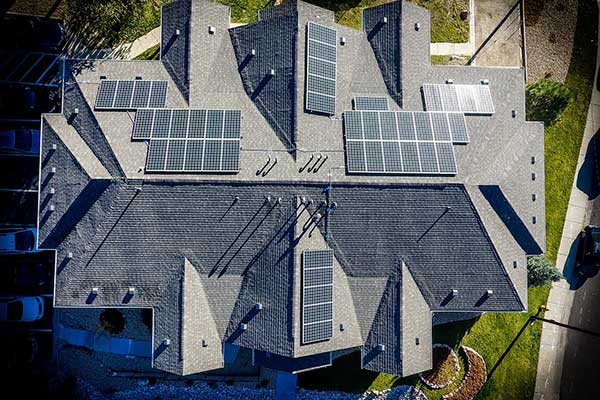- Recent research reveals a surprising trend in residential solar power usage: households tend to increase their electricity consumption after installing solar panels, leading to less energy savings than anticipated.
- This phenomenon, known as the 'solar rebound effect', challenges assumptions about the benefits of residential solar power.
- The study by Matthew Oliver at the Georgia Institute of Technology suggests a need to reassess solar energy policies and subsidies.
Imagine a household that consumes 1,000 kilowatt hours of energy per month. Then they install solar panels on their roof that generate 500 kilowatt hours of electricity per month on average.
How much should their consumption of electricity drawn from the power grid decline after they install solar? Five hundred kilowatt hours is the expectation, but in reality, it’s less than that for most people. Now, they’re consuming more than 1,000 kilowatt hours per month.
This paradox is called the solar rebound effect: the ratio of the increase in energy consumption to the amount that is generated by the solar panels. In new research from the Georgia Institute of Technology, Matthew Oliver, an associate professor in the School of Economics, presented this argument for how the economics of solar power really work, in “Tipping the Scale: Why Utility-Scale Solar Avoids a Solar Rebound and What It Means for U.S. Solar Policy,” published in The Electricity Journal.
“Getting people to adopt this technology does reduce their reliance on conventional energy sources, but not by as much as you think,” Oliver said. “This is because people end up increasing their electricity consumption after adopting solar panels, as an economic and behavioral response.”
People may believe they are saving money due to subsidies, or might perceive that their electricity consumption isn’t as environmentally damaging as it was before—so they leave the lights on longer and appliances running.
Policymakers must account for solar rebound when determining solar subsidies, Oliver argues. Take the example of a typical household. If their solar rebound is 20%, they’re eliminating 20% of the carbon reduction benefits that they should have received from adding panels.
“You have to build the estimated rebound effect into your benefit-cost ratio with regard to how much electricity consumption you’re actually displacing,” he said. “Because it’s not happening on a one-for-one basis.”
If subsidizing residential solar proves to not be worthwhile, then shifting subsidies to utility-scale solar may be a good alternative. While household solar rebound effects happen because of individual consumer behavior, this is not an issue with utility providers. Utility-scale solar could enable solar to reach its full carbon reduction potential.
“Policymakers could consider reallocating subsidies in a more optimal way to support greater investment in utility-scale solar,” Oliver said. “That’s not to say policymakers wouldn’t continue to subsidize residential solar, but there has been an overwhelming policy focus on the adoption of residential solar.”
—
Publication Referenced in the Article:
Matthew E. Oliver, Tipping the scale: Why utility-scale solar avoids a solar rebound and what it means for U.S. solar policy, The Electricity Journal (2023). DOI: 10.1016/j.tej.2023.107266
This article has been adapted from source material published by Georgia Institute of Technology.









Comments